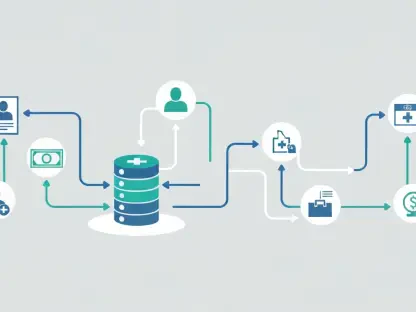In a digital landscape where trust underpins every transaction, a staggering breach within the NPM ecosystem has sent shockwaves through the technology and cryptocurrency sectors, exposing vulnerabilities that could compromise billions of software downloads and threaten the security of countless users. This incident, involving the hijacking of a trusted developer’s account, has unveiled a sophisticated supply chain attack that injected malicious code into widely-used JavaScript packages. With over one billion collective downloads at stake, the implications are profound, particularly for crypto applications where funds can be silently diverted through altered wallet addresses. This breach not only highlights the fragility of software dependencies but also underscores the urgent need for heightened security measures across industries reliant on open-source tools. As attackers continue to exploit human error and technical gaps, understanding the scope and impact of this attack becomes crucial for safeguarding digital assets and maintaining trust in interconnected systems.
Unpacking the Scale of the NPM Breach
The Magnitude of the Supply Chain Attack
The scale of this NPM breach is nothing short of staggering, with compromised JavaScript packages amassing over two billion weekly downloads, affecting countless applications and websites worldwide. Experts, including Ledger’s Chief Technology Officer Charles Guillemet, have labeled this as a potentially historic supply chain attack due to its unprecedented reach within the JavaScript ecosystem. The malicious code, designed to swap crypto wallet addresses during transactions, poses a direct threat to users by redirecting funds to attackers without immediate detection. This tactic echoes past high-profile incidents, where losses have soared into billions, emphasizing the severity of such vulnerabilities. The cascading effect on downstream projects, which often unknowingly incorporate these tainted dependencies, amplifies the risk, turning a single point of failure into a widespread crisis. As developers and companies scramble to assess exposure, the incident reveals just how deeply interconnected and fragile modern software ecosystems have become in the face of targeted cyber threats.
Origins and Execution of the Attack
Delving into the origins of this breach, it becomes clear that human error played a pivotal role, as the attack began with a phishing campaign that tricked a package maintainer into clicking a deceptive link mimicking the official npmjs.com domain. This seemingly minor lapse granted attackers unauthorized access to a trusted NPM account, enabling them to inject malicious code into popular libraries relied upon by millions of developers. The sophistication of the phishing scheme highlights a growing trend where cybercriminals exploit trust and familiarity to bypass technical defenses. Once inside, the attackers manipulated code to execute address-swapping malware, a method particularly devastating for cryptocurrency transactions where precision in wallet details is paramount. This breach serves as a stark reminder of the need for robust authentication protocols and user education to prevent such deceptions. As the tech community grapples with the fallout, identifying and closing these entry points remains a critical challenge to prevent similar exploits in the future.
Responding to the Threat and Mitigating Risks
Immediate Actions and User Safety Measures
In the wake of this alarming NPM breach, immediate steps have been outlined to protect users, particularly those in the cryptocurrency space, from potential financial losses due to malicious code. A key recommendation from security experts is for individuals without hardware wallets to suspend all on-chain transactions until the threat is fully contained, as the risk of fund diversion remains high. For those with hardware wallets, safety is somewhat assured, but only if every transaction is meticulously verified before signing to ensure no address tampering has occurred. This advice aligns with a broader push within the crypto community toward adopting hardware-based security solutions as a frontline defense against sophisticated attacks. The urgency of these measures cannot be overstated, as the silent nature of address-swapping malware makes detection difficult without proactive vigilance. Users must prioritize caution over convenience, adapting to a landscape where cyber threats continuously evolve to exploit even the smallest oversight.
Developer Responsibilities and Long-Term Fixes
Beyond user precautions, developers bear a significant burden in addressing the aftermath of this supply chain attack, with some compromised packages already patched within hours of discovery, though risks linger for projects with automatic dependency updates. Security teams, including Ledger’s experts, strongly advocate for thorough audits of recent code updates and manual reviews of dependencies to identify and eliminate lingering malicious elements. This process, while resource-intensive, is essential to prevent the reintroduction of tainted code into live systems, especially in applications handling sensitive financial transactions. Moreover, the incident has sparked discussions on enhancing systemic protections, such as implementing stricter access controls and multi-factor authentication for package maintainers. Looking ahead, fostering a culture of security-first development, where dependency hygiene is non-negotiable, could mitigate future breaches. The tech industry must collectively invest in tools and training to fortify the software supply chain against such pervasive threats.
Reflecting on Systemic Vulnerabilities
Reflecting on the broader implications, this breach exposed deep-seated vulnerabilities within software supply chains, where a single compromised account triggered a ripple effect impacting billions of downloads and countless applications. The incident, driven by a phishing exploit, underscored how human factors often remain the weakest link despite advances in technical defenses. It also highlighted the inherent risks of open-source ecosystems, where trust in shared libraries can be weaponized by attackers with devastating consequences. The response, though swift in patching some packages, revealed gaps in automatic update mechanisms that continued to propagate malicious code in certain environments. This event served as a wake-up call for the industry to reassess dependency management practices and prioritize user education on phishing prevention. Ultimately, the breach reinforced the critical role of hardware wallets and transaction verification as indispensable safeguards, urging a shift toward more resilient security frameworks to counter evolving cyber threats.









